
8 Proven Strategies to Convert Price Conscious Customers into Loyal Buyers
We’ll guide you through tactics that enhance loyalty and customer satisfaction, all while keeping your profit margins healthy!
Shipping, Tracking & Notifications
Boost customer experience and reduce support tickets
Realtime order and shipment tracking
Proactive order and shipping notifications
AI-Enhanced Discounted Labels
Predictive pre-purchase estimated delivery dates
Self-Serivce branded order tracking
Effortless experience delivered
Identify and Resolve Order Issues
Realtime order and shipment tracking
Make returns profitable and delight customers
Flexibility to define any return destinations & conditions
Simplify returns for your customers and team
Incentivize exchanges over returns
Returns management made easy for your team
Returns management made easy for your team
Easy claims and smart upsells
Understand why your customers are returning
In-Store & Curbside Pickup
Unify the online and the in-store experience
Hassle-free pickup experience for customers
In-Store dashboard to keep operations streamlined
In-Store and Online orders unified
Drive foot-traffic to your stores
Shipping, Tracking & Notifications
Boost customer experience and reduce support tickets
Realtime order and shipment tracking
Proactive order and shipping notifications
AI-Enhanced Discounted Labels
Predictive pre-purchase estimated delivery dates
Self-Serivce branded order tracking
Effortless experience delivered
Identify and Resolve Order Issues
Realtime order and shipment tracking
Make returns profitable and delight customers
Flexibility to define any return destinations & conditions
Simplify returns for your customers and team
Incentivize exchanges over returns
Returns management made easy for your team
Returns management made easy for your team
Understand why your customers are returning
In-Store & Curbside Pickup
Unify the online and the in-store experience
Hassle-free pickup experience for customers
In-Store Dashboard to keep operations streamlined
In-Store and Online orders unified
Drive foot-traffic to your stores
Boost customer experience and reduce support tickets
Realtime order and shipment tracking
Proactive order and shipping notifications
AI-Enhanced Discounted Labels
Predictive pre-purchase estimated delivery dates
Self-Serivce branded order tracking
Effortless experience delivered
Make returns profitable and delight customers
Flexibility to define any return destinations & conditions
Simplify returns for your customers and team
Incentivize exchanges over returns
Returns management made easy for your team
Equip your team for precise return checks.
Easy claims and smart upsells
Understand why your customers are returning
Unify the online and the in-store experience
Hassle-free pickup experience for customers
In-Store Dashboard to keep operations streamlined
In-Store and Online orders unified
Drive foot-traffic to your stores
Find the answer to all your questions
Take a step by step trip through our functionality to see how we can improve your ecommerce processes.
Explore the most comon questions about WeSupply
Calculate the ROI that WeSupply can bring you
Request a no strings attached review of your current shopping experience and missed conversion opportunities
Read actionable articles on how to optimize your post-purchase experience and decrease support tickets
Get inspired by stories of how our customers implemented an effortless post-purchase experience
Wondering if WeSupply is a good fit for you? Read through our use cases to see how we can help you increase conversion & improve CX!
A Deep Dive into Top Companies' Order Tracking & Returns Strategy
Find the answer to all your questions
Explore the most comon questions about WeSupply
Calculate the ROI that WeSupply can bring you
Request a no strings attached review of your current shopping experience and missed conversion opportunities
Take a step by step trip through our functionality to see how we can improve your ecommerce processes.
Read actionable articles on how to optimize your post-purchase experience and decrease support tickets
Get inspired by stories of how our customers implemented an effortless post-purchase experience
A Deep Dive into Top Companies' Order Tracking & Returns Strategy
Wondering if WeSupply is a good fit for you? Read through our use cases to see how we can help you increase conversion & improve CX!
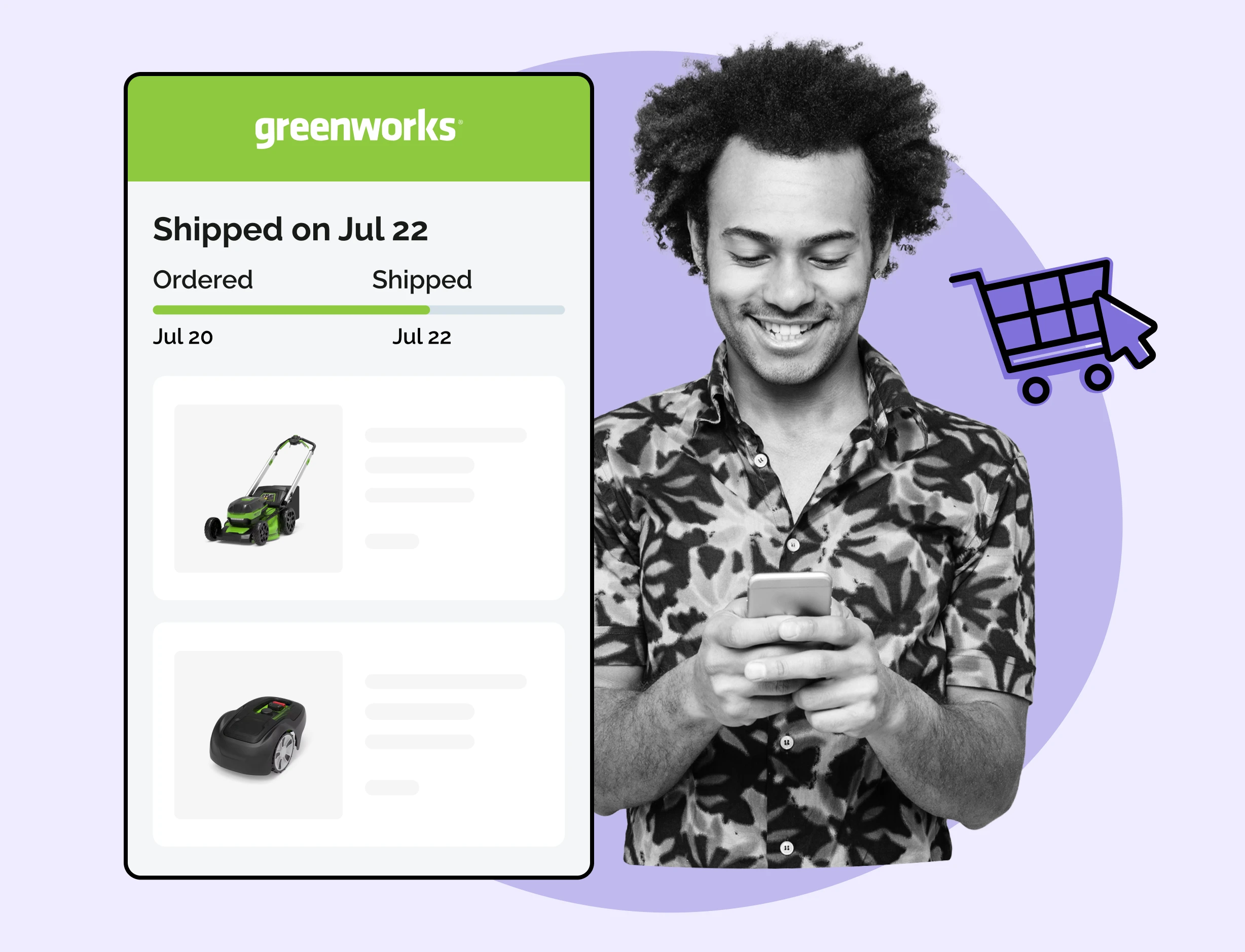
Understanding mobile shopping trends is pivotal for anyone involved in today’s retail ecosystem. This article dives into the heart of mobile commerce, exploring how innovations like shopping apps, AR/VR technology, and voice-activated interfaces are reshaping consumer habits and the ways retailers are meeting these new demands. Stay abreast of these trends to navigate the evolving terrain of mobile shopping.
Mobile commerce is driven by technological advancement and changing consumer behaviors, with mobile apps providing more engaged customer experiences and higher conversion rates for retailers than mobile web pages.
Emerging technologies like Augmented Reality (AR) and Virtual Reality (VR) are revolutionizing the shopping experience, while social commerce integrates direct sales through platforms like Instagram, offering a seamless shopping journey.
Mobile commerce is also being shaped by the use of chatbots for customer service, the importance of mobile accessibility, secure transactions to combat mobile fraud, and streamlined processes such as one-click ordering and comprehensive omnichannel strategies.
WeSupply leads in mobile shopping innovation, enhancing ecommerce with features like post-purchase notifications, website-like exchanges, Clover integration for mobile payments, and data-driven personalization. It centralizes orders for a seamless experience, tracks key metrics like CSAT and NPS, and offers efficient shipping updates. This approach elevates customer engagement and satisfaction, adapting to mobile trends. Upgrade your ecommerce with WeSupply—start today to unlock your store’s potential!
Mobile commerce is evolving continuously, and this evolution is reshaping the retail industry in ways we have never seen before. What started as a mere extension of online shopping has now evolved into a dominant force, changing the way consumers interact with businesses and transforming the landscape of the retail industry.
Technological advancements and shifting consumer behaviors, especially among the younger generation, fuel the rise of mobile commerce.
The shift towards mobile-dominated shopping is significant, with younger generations, particularly those aged 18 to 34, playing a key role. These digital natives frequently use smartphones to shop online, shaping mobile shopping trends and driving the industry forward. Bigger screens on smartphones have changed mobile usage patterns, making online shopping more comfortable and appealing to consumers of all ages.
Retailers have responded to this shift by developing both mobile web pages and apps, two main avenues for reaching consumers remotely. Mobile apps, in particular, are often associated with more loyal and engaged customers. Additionally, integrating social media with mobile commerce has amplified the visibility of online stores, allowing for easy sharing and promotion of products.
Another significant trend in mobile commerce is the proliferation of mobile shopping apps for mobile phones. Mobile app technology, including mobile commerce app, has emerged as a powerful tool for improving customer experiences. These top mobile commerce examples are designed to be easy to use and quick to load, providing consumers with the convenience of making purchases from anywhere at any time. As mobile commerce trends continue to evolve, businesses must adapt to stay competitive in this growing market.
Furthermore, mobile shopping apps offer both online and offline accessibility. This means consumers can access products and key features even when they don’t have an internet connection. The integration of a phone’s native features, such as GPS and cameras, enhances the user experience compared to mobile web pages.
The shift from web-based shopping to app-based shopping is largely influenced by consumer preferences. Mobile apps are often perceived as more convenient than mobile websites, eliminating the need for URL memorization or login to access the store. They are also considered more secure and tend to perform better than mobile web browsers, making them a preferred choice for shopping.
Retailers also derive several advantages from the increased usage of mobile shopping apps. One of the most significant advantages is higher conversion rates. Mobile apps make it easier for customers to browse and make purchases on their own devices, leading to increased average order values.
Another benefit of mobile apps is the ability to:
Send push notifications directly to consumers, providing a direct communication channel that can potentially increase conversion rates
Foster customer loyalty, serving as a constant reminder of the retailer’s brand
Run loyalty programs, incentivizing customers to make more frequent purchases and engage with the brand, leading to increased sales.
WeSupply leverages the increase in mobile shopping to elevate conversion rates and customer engagement through targeted post-purchase communications and streamlined exchanges. These strategies not only enhance the customer experience but also promote loyalty and higher order values. Key features include:
Exchanges: Offer an exchange experience that mirrors the ease of shopping on the website, allowing customers to choose any product as a replacement, regardless of price.
In essence, WeSupply turns every purchase into an opportunity for engagement and growth. Ready to transform your post-purchase journey? Book a demo today and see the difference firsthand.
The utilization of Augmented Reality (AR) and Virtual Reality (VR) technologies presents another revolutionary development in mobile commerce. These technologies merge the digital and real worlds, offering a mix of real-world and digital experiences that make shopping more interactive and personalized.
AR technology enhances the user’s real-world view with computer-generated visuals, including product details, customer reviews, and style recommendations. On the other hand, VR creates a completely simulated environment where users can interact with and feel immersed in, offering a comprehensive sensory experience.
The shopping experience has been significantly enhanced by numerous successful implementations of AR/VR. Ikea’s app, for instance, allows users to design entire rooms in 3D, integrating existing furniture into the design plan. Similarly, Wayfair’s “View in Room 3D” feature enables shoppers to visualize furniture and decor in their own space.
On the other hand, beauty retailer Sephora’s Virtual Artist app uses facial recognition to give customers a virtual makeover, allowing them to experiment with various beauty products without physical testing. This way, AR/VR technologies not only make shopping more interactive but also help customers make more informed purchasing decisions.
Immersive technologies hold substantial potential in the realm of ecommerce. AR and VR technologies are expected to become integral to the omnichannel shopping experience, enriching the in-store journey with immersive and personalized experiences.
As these technologies continue to develop, their integration into mobile ecommerce could make shopping more interactive and entertaining. Ecommerce investments in AR and VR are predicted to increase as these technologies demonstrate their effectiveness in boosting consumer engagement and sales.
The rise of social commerce signifies a major transformation in the ecommerce landscape. Social commerce allows businesses to sell products directly through social media platforms, creating a seamless shopping experience that combines social interaction with ecommerce.
One of the most significant advancements in social commerce is Instagram’s shoppable posts and stories, which have revolutionized the ecommerce industry by enabling in-app purchases. This increases convenience for consumers by allowing them to shop without leaving the app.
Combining ecommerce with social media platforms has created new possibilities for direct sales. Instagram, for instance, allows for direct sales through features like shoppable tags and in-app checkout. This transformation has made Instagram not only a social media platform but also a potential standalone ecommerce platform.
WeSupply’s Branded Tracking Page stands as a pivotal tool for integrating eCommerce with social media platforms, thereby opening avenues for direct sales. By incorporating personalized marketing assets, such as social media links, WeSupply enhances the post-purchase experience. This not only strengthens brand presence but also fosters seamless communication across platforms. Businesses can leverage this feature to connect with customers more effectively, encouraging engagement and direct interactions through their preferred social channels. This innovative approach ensures that every purchase is an opportunity to deepen customer relationships and drive sales directly from social media.
Self-service branded order tracking
Book a quick call with our experts to see how WeSupply can give your customers the ability to track their orders on your website to decrease the number of WISMO support tickets.
Social commerce tools like Instagram Shops have had a significant impact on the ecommerce market. Instagram’s shoppable features streamline the purchasing process, potentially increasing sales and improving customer shopping experiences.
The visual nature of Instagram allows businesses to showcase their products in an engaging and informative way, aiding consumer purchase decisions. Furthermore, small businesses can thrive on Instagram thanks to its massive user base and engaging content formats like Stories, Reels, and shoppable posts.
Effective use of social media can significantly boost ecommerce success. One effective strategy is partnering with the right influencers on Instagram. Influencers can reach wider audiences and increase brand awareness, driving more traffic to your ecommerce site.
Another vital strategy is creating visually appealing content that tells a compelling story. Such content can help your business stand out on Instagram and engage potential customers. Measuring the ROI of influencer marketing and advertising on Instagram is also essential to ensure that you are making the most of your investments.
Voice-activated shopping adds another facet to the dynamic world of mobile commerce. Voice-activated shopping allows consumers to make purchases using their voice and a smart device, such as a smartphone or a device with a voice assistant like Amazon Echo or Google Home Speaker.
Voice-activated shopping experiences are being enhanced by integrating voice assistants into various channels such as mobile apps, websites, and smart speakers, leading to a more seamless customer experience.
Voice shopping offers considerable benefits for both consumers and retailers. For consumers, voice shopping improves the customer experience by allowing them to simply speak to their voice assistant to make a purchase. This is particularly beneficial for individuals with disabilities requiring more accessible shopping options.
Market projections suggest a growing influence of voice assistants in ecommerce. As of 2022, 27.4 percent of US consumers reported using smart assistants for online purchases, indicating a significant opportunity for businesses in the realm of voice commerce.
Furthermore, the voice assistant application market is expected to grow from $2.8 billion in 2021 to $11.2 billion by 2026, at a compound annual growth rate (CAGR) of 32.4%. This growth is largely driven by the adoption of voice assistant applications in smart retail and ecommerce, as well as the increasing integration of voice assistant applications into mobile applications, websites, contact centers, smart speakers, and social media.
For businesses to fully capitalize on the benefits of voice shopping, they need to optimize for voice search and transactions. One way to do this is by using long-tail keyword research to match the conversational queries of voice shoppers and incorporating a natural, conversational tone in their content.
Businesses should also focus on optimizing for local search, as many voice searches are for local information and services. Implementing structured data markup can improve a business’s visibility in voice search results, especially for those operating local businesses.
Mobile payments constitute another revolutionary element in the ecommerce arena. Mobile payments include various options such as:
Mobile wallets
Mobile bank transfers
SMS payments
Mobile-to-mobile payments
NFC transactions
QR code scanning
MST payments
Mobile payments are becoming increasingly popular in the restaurant industry, providing customers with a quick and convenient way to pay. The use of mobile payment technology in restaurants is associated with:
the ability to offer online food delivery
real-time analytics
push notifications for promotions
faster payment processing
The integration of mobile payments into ecommerce platforms offers several advantages. Mobile payments offer a fast transaction process which saves time for both employees and customers, eliminating the need for handling cash, change, or entering a PIN.
Furthermore, mobile payments are secure as the credit card information is encrypted by the apps and the device’s security features help prevent credit card fraud. Integration of mobile payment systems with rewards programs also allows for the implementation of marketing strategies including rewards points, coupons, and exclusive promotions.
The integration of WeSupply with Clover represents a pivotal advancement in ecommerce, seamlessly blending mobile payments into online shopping platforms. This all-in-one payment solution, ranging from virtual terminals to POS systems, simplifies transactions for both businesses and consumers. By incorporating Clover’s versatile payment options, WeSupply enhances the checkout process, ensuring a smooth, secure, and convenient payment experience. This integration not only streamlines operations but also boosts customer trust and satisfaction, leading to increased sales and a competitive edge in the digital marketplace.
Mobile payments have a significant influence on consumer buying habits. They provide a secure and convenient payment option, encouraging the use of digital wallets like Apple Pay, Samsung Pay, and Google Pay.
Mobile payment technology increases security for transactions through authentication methods such as passwords, facial recognition, or fingerprints, reducing the risk of information theft. This increased security, coupled with the convenience of mobile payments, resonates with customers who prefer not to carry cash or credit cards and like to make payments from anywhere using their mobile devices.
Another key trend shaping the future of ecommerce is the personalization in mobile shopping. Personalization strategies can help improve customer experiences by providing relevant product recommendations and offers based on consumers’ browsing and purchase history.
According to Deloitte & Touche, multichannel shoppers (those who shop both online and in-store) are worth up to 208 percent more than single-channel shoppers, emphasizing the financial benefits of personalization.
Data-driven personalization plays a crucial role in improving customer experiences. Personalization strategies in mobile shopping have been shown to improve customer experiences across various industries, including grocery/drug stores, travel and leisure, and automotive.
For instance, in the grocery/drug store sector, 90% of respondents are more likely to do business with websites/apps offering personalized experiences. Similar trends are observed in travel and leisure and the automotive industry.
WeSupply leverages data-driven personalization to revolutionize customer experiences, focusing on logistics analytics to guide businesses in refining their post-purchase journey. By enabling the tracking of key metrics like CSAT and NPS, WeSupply offers actionable insights into customer needs and preferences. This approach ensures continuous improvement, allowing retailers to adapt and enhance the shopping experience, thereby increasing customer loyalty and satisfaction. Through pinpointing and resolving any issues, from order processing to product quality, WeSupply empowers businesses to excel in customer service and satisfaction.
To leverage customer data ethically and effectively, businesses need to follow certain best practices. Marketers use a range of data types, including website activity and transaction history, to create personalized marketing campaigns.
It’s also important to respect the privacy of consumers while collecting and using their data. A clear, transparent standard on data usage is a competitive advantage, as customers prioritize data privacy and choose providers offering transparency about data collection and processing.
Another important facet of mobile commerce is mobile accessibility. Inclusive mobile design benefits millions of people, including those with disabilities, by allowing them to use technology to improve their quality of life and access information.
Accessibility adherence in design standards results in a larger potential user group for digital products and ensures an excellent user experience for all. This is essential for ensuring all users, including those with disabilities, have equal access to e-commerce platforms.
Ensuring mobile accessibility in ecommerce apps and websites requires following certain best practices. Familiarizing with native environment accessibility standards, such as those for Android and iOS, is a crucial first step. These standards provide assistive technologies like text size adjustments, screen contrast adjustment, and screen readers.
Businesses should also ensure their online platforms are mobile-friendly, with the following features:
Quick loading times
Readable product descriptions on small screens
Regular testing and evaluation of the mobile commerce platform with accessibility checkers and validators to ensure compliance with standards like WCAG 2.1.
Mobile accessibility not only increases user engagement by making apps and websites usable for a wider audience but also ensures compliance with legal standards. In the USA, for example, federal, state, and local government websites are committed to fulfilling WCAG AA level compliance of accessibility standards.
In some regions, legal compliance goes even further. For instance, in Ontario, Canada, private or non-profit organizations with more than 50 employees and all public sector organizations must meet AA level by January 2021. The European Union has similar mandates for any new website development starting in 2019.
There are several tools and techniques for improving accessibility in mobile commerce. Implementing native mobile accessibility features such as screen readers and voice control can greatly enhance the experience for users with disabilities.
Utilizing contrast checkers can ensure sufficient color contrast for text and backgrounds in mobile apps and websites, accommodating users with visual impairments. Similarly, accessibility testing tools and simulators can help emulate different devices and assistive technologies to better understand user experiences.
One-click ordering represents another noteworthy innovation in the world of mobile commerce. Amazon’s “1-Click” ordering system, patented in 1999, was a major breakthrough for hassle-free online shopping. This system allows consumers to purchase with a single click after entering their details just once.
The significance of simplifying the checkout process for mobile users cannot be overstated. A simplified checkout process like one-click ordering is essential on mobile devices because the smaller screen size increases the hassle associated with multiple clicks, thus lowering the likelihood of completing a purchase.
The use of chatbots to automate customer service in mobile commerce is on the rise. Mobile chatbots in e-commerce can enhance customer satisfaction by providing instant solutions to inquiries with seamless real-life interaction.
The rise of mobile chatbots is driven by their ability to replicate human conversation and understand customer preferences, leading to improved customer service and engagement.
Innovative mobile tactics like geo-targeting can improve foot traffic in physical stores by engaging consumers to shop locally based on their location.
Lastly, to create a seamless shopping experience for mobile shoppers, omnichannel strategies are indispensable. These strategies allow for full engagement with consumers across all channels, enhancing consumer experience, and improving brand awareness and loyalty.
Creating a seamless shopping experience across all channels is central to successful omnichannel strategies. Innovative mobile tactics like geo-targeting can improve foot traffic in physical stores by engaging consumers to shop locally based on their location. Additionally, mobile coupons specific to in-store purchases can drive in-store traffic and offer consumers convenience and paperless promotions.
Omnichannel experience also extends post-purchase with WeSupply’s innovative approach to order tracking. By centralizing orders from a variety of sources—website, phone, apps, marketplace, POS, OMS, and WMS—WeSupply ensures a seamless and unified shopping journey. Customers benefit from a single, reliable portal to check their orders, no matter the purchase origin. This consolidation not only simplifies the tracking process but also enhances the shipping experience with timely updates and detailed package tracking information, fostering a positive brand experience across all channels.
As our world becomes more digital, tackling mobile fraud has become a top priority. Secure mobile apps can help protect consumers and build trust.
Mobile fraud is a growing concern for smartphone users; secure mobile apps and mobile sites can help protect consumers and build trust in using their mobile device.
Secure mobile apps play a critical role in building trust with customers. Integrating security from the beginning of app development is crucial to establish confidence among users. Utilizing Transport Layer Security (TLS) and Certificate Pinning ensures encrypted communication between the app and backend, protecting against Man-in-the-Middle attacks.
With the rise of mobile commerce, certain trends in mobile fraud have emerged. Synthetic identity fraud combines real and fake information to create profiles that can deceive fraud control systems, making it hard to distinguish legitimate customers from fraudsters.
Peer-to-peer payment fraud is on the rise as these platforms provide instant and irreversible transactions, and fraudsters use social engineering to deceive users.
Mobile commerce is a rapidly changing field, with constant emergence of new technologies and trends. Some of the key trends and technologies in mobile commerce include:
Rise of mobile shopping apps
Voice-activated shopping experiences
Integration of AR/VR technologies
Emergence of social commerce
The landscape of mobile commerce is rich and diverse, offering exciting opportunities for businesses and consumers alike.
As we look to the future, it’s clear that businesses must adapt to these changes to stay competitive and grow in the evolving ecommerce landscape.
To navigate the future of mobile commerce, businesses are encouraged to adopt mobile strategies to streamline processes, improve competitiveness, and increase productivity. Implementing mobile strategies can lead to more jobs completed per worker per day, thereby increasing the efficiency of the workforce.
In summary, mobile commerce is a dynamic field that continues to evolve and reshape the retail industry. The rise of mobile shopping apps, the integration of AR/VR technologies, the growth of social commerce, the convenience of voice-activated shopping, the revolution of mobile payments, the importance of personalization, the necessity of mobile accessibility, the ease of one-click ordering, the automation of customer service through chatbots, and the significance of omnichannel strategies all highlight the multi-faceted nature of mobile commerce.
WeSupply is at the forefront of harnessing mobile shopping trends to enhance ecommerce by integrating high-impact features like post-purchase email and SMS notifications, streamlined exchanges that mirror the website experience, and the integration of Clover for seamless mobile payments. Through data-driven personalization, WeSupply optimizes the customer journey with logistics analytics, tracking metrics such as CSAT and NPS to continuously improve service. Additionally, its omnichannel tracking solution centralizes order information from diverse sources into one portal, upgrading the post-purchase experience with efficient shipping updates and a unified shopping journey. WeSupply’s comprehensive approach not only caters to the evolving preferences of mobile shoppers but also sets a new standard for customer engagement and satisfaction in the digital age. Elevate your ecommerce game with WeSupply. Get started today and unlock the full potential of your online store!
Combat inconvenience with proactivity & self service
Book a quick call with our experts to see how WeSupply can help you make returns easy for your customers with a beautiful, self-service solution that makes their experience easier while also providing new ways to lower costs and earn back revenue.
Mobile shopping started in 1997 when the first mobile device-enabled Coca-Cola vending machines were installed in Finland, and it gained traction over the following decades as more users conducted transactions from their mobile devices.
Mobile commerce has transformed the way business is conducted by enabling customers to store all their payment methods on their phones, eliminating the need for physical wallets and enabling convenient online payment options.
The rise of mobile shopping apps is evident in the increasing adoption of in-app mobile commerce, especially after the surge in app usage during the COVID-19 pandemic. Consumers worldwide spent more time on mcommerce apps in 2022 compared to 2021, indicating a growing trend.
WeSupply leverages the latest mobile shopping trends by integrating features such as post-purchase email and SMS notifications, streamlined exchanges, Clover for seamless mobile payments, and data-driven personalization. This ensures a modern and efficient shopping experience that meets the expectations of today’s mobile users.
Through its integration with Clover, WeSupply provides a seamless mobile payment experience, covering everything from virtual terminals to POS systems. This integration simplifies transactions, enhancing the overall customer experience.
WeSupply’s omnichannel tracking solution centralizes order information from various sources—website, phone, apps, marketplace, POS, OMS, WMS—into one portal. This provides customers with a unified and efficient way to track their orders, regardless of where they made the purchase.

Learn How To Create Successful Post Purchase Email Campaigns
Build an effective post-purchase email flow that helps you increase customer satisfaction and drive revenue growth!
Consumers seek the best deals on:

We’ll guide you through tactics that enhance loyalty and customer satisfaction, all while keeping your profit margins healthy!
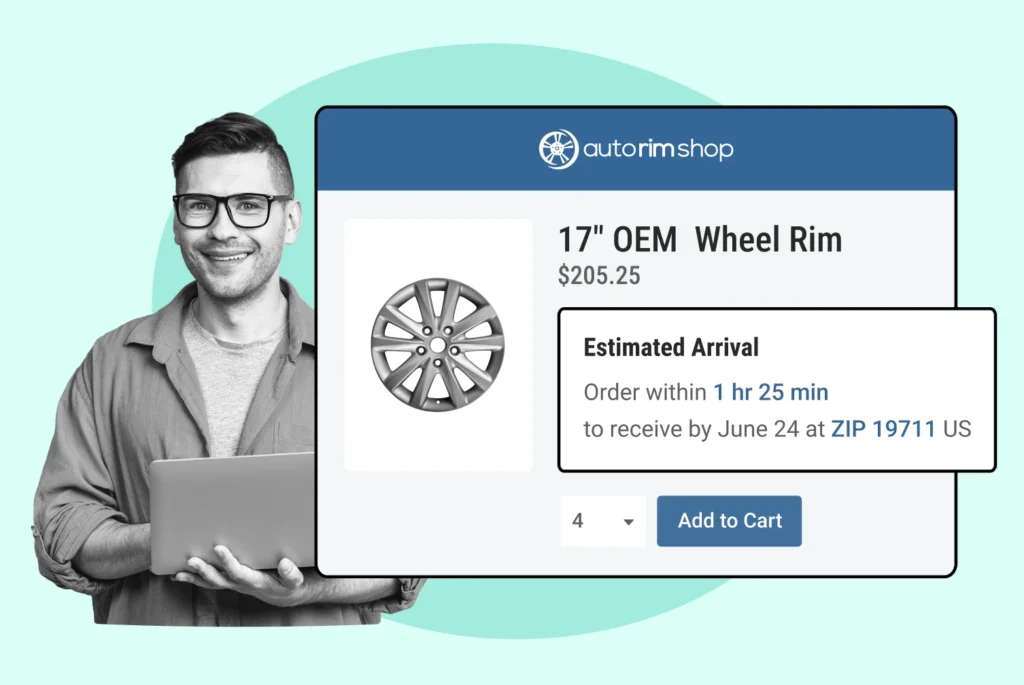
Turn your product pages into conversion engines: exceptional design, engaging content, smart SEO, and flawless mobile experience!

The top e-commerce platforms tailored to diverse business needs: choose a solution that promises growth, efficiency & customer satisfaction!

7 actionable steps to help you transform your customers into brand advocates, ensuring your brand’s message is enthusiastically shared!

This article will teach you how to grow while staying sustainable as consumers increasingly favor responsible brands.
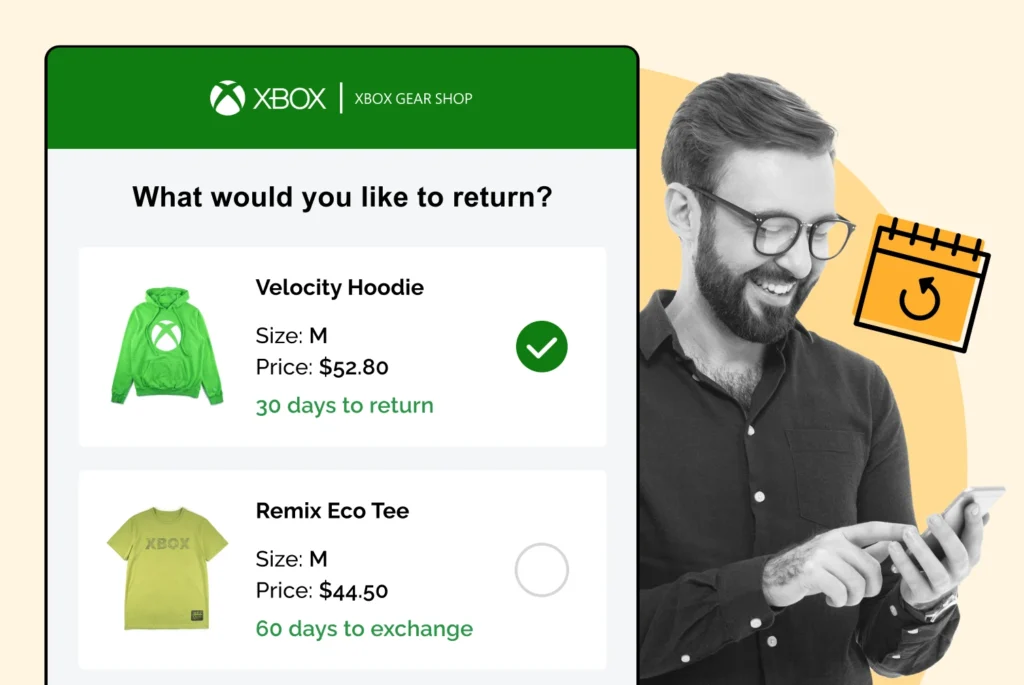
Let’s delve into return windows, their influence on brand loyalty, and the balancing act businesses perform when setting these timeframes.

Effective strategies for mobile return optimized returns in e-commerce: enhance customer satisfaction and streamline your operations!
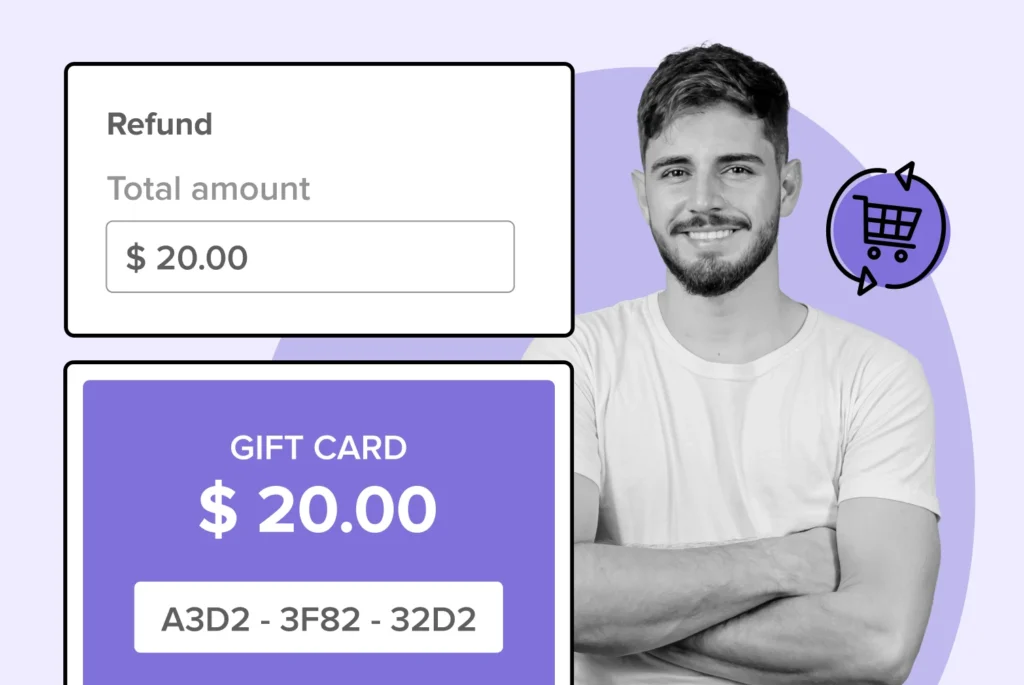
Elevate your online gift exchange e-commerce operations: proven tactics that enhance customer satisfaction and reduce hassle!
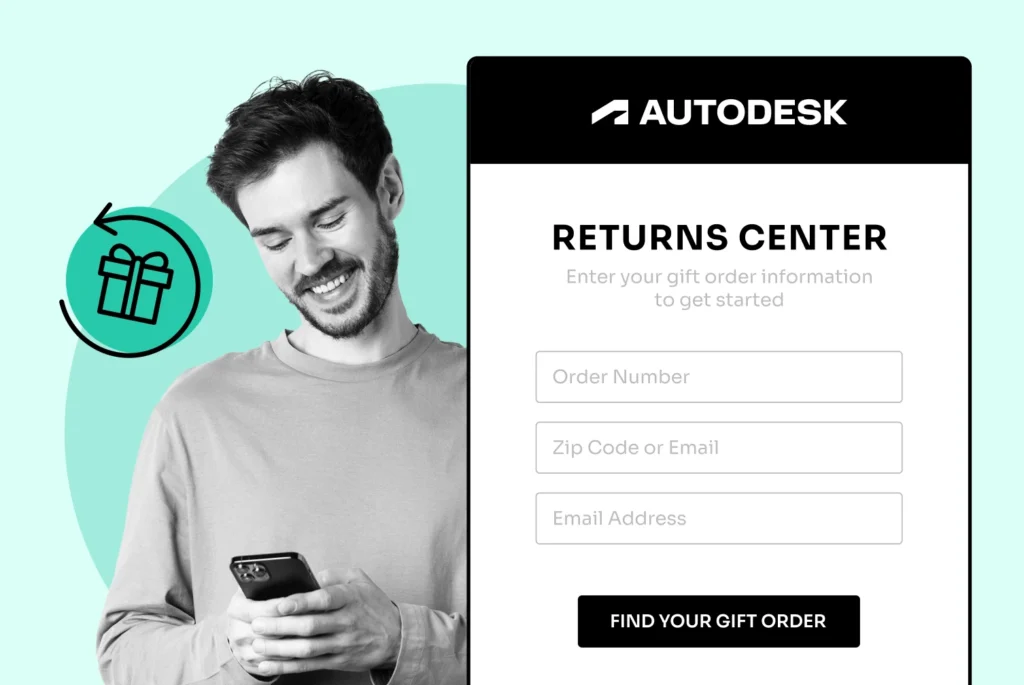
Effortless Online Gift Exchanges: Your Essential Guide Online gift exchanges can be tricky, but with the right approach, they’re a breeze.